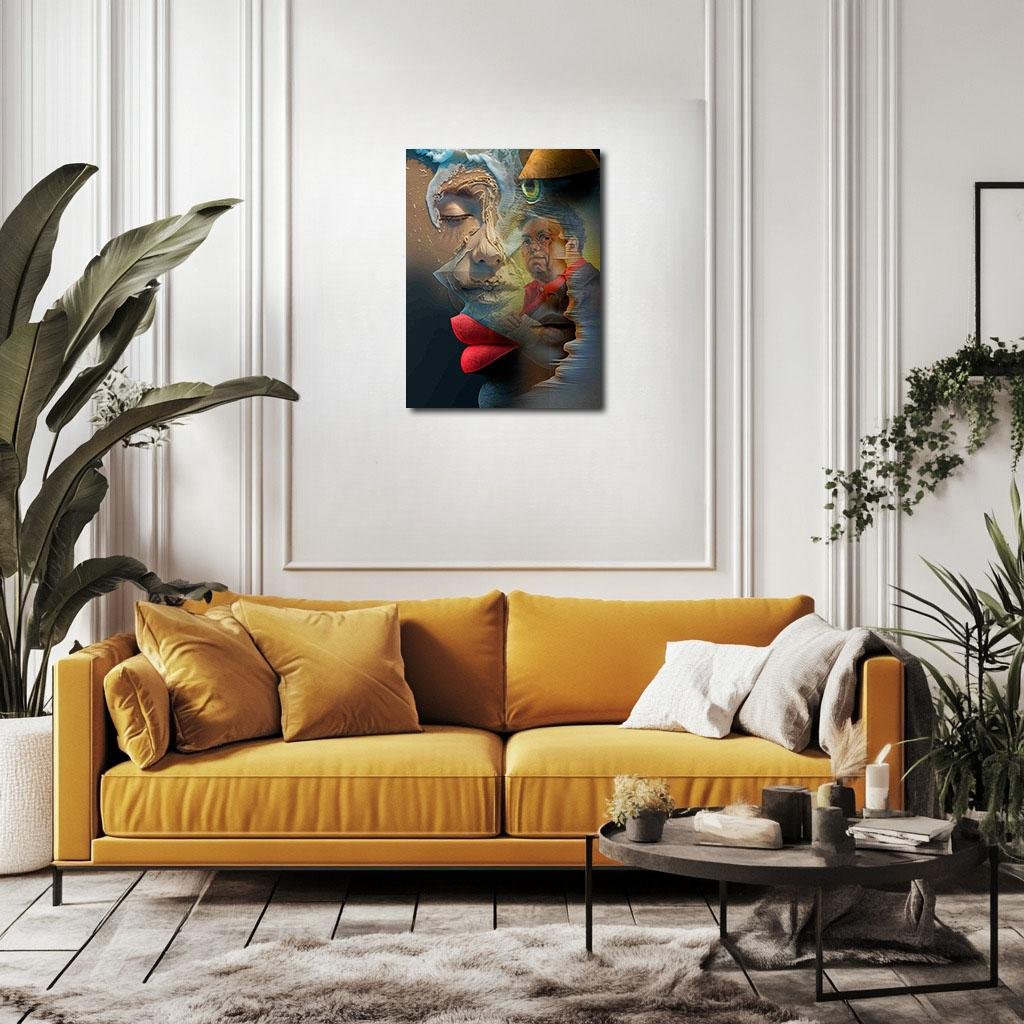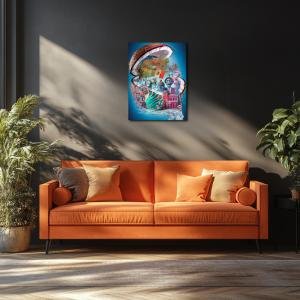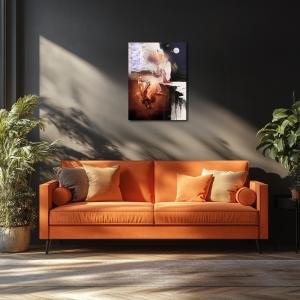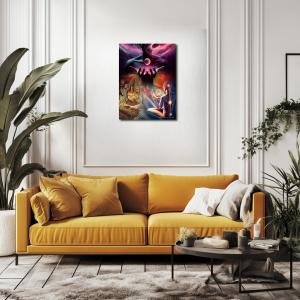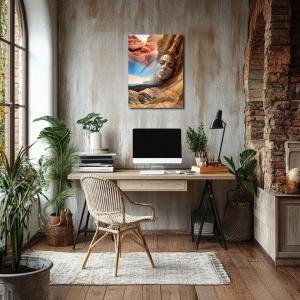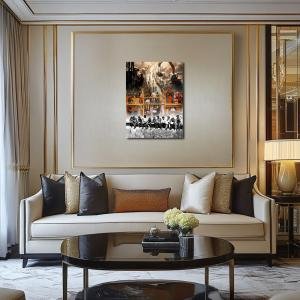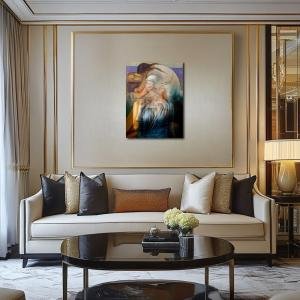Contours of Inheritance: A Self-Portrait in Echoes
Contours of Inheritance reimagines Diego Rivera’s self-portrait as a surrealist meditation on memory, identity, and artistic legacy. His face, partially embedded in a textured feminine profile, emerges from oceanic waves, cracked stone, and layered abstraction. Through a tactile color palette of bold reds, earthen whites, shadowed blues, and soft greens, the piece explores Rivera not as a monolith but as a myth-in-motion. This conceptual portrait dissolves ego into landscape, rendering Rivera not as a man who painted others, but as one still being painted by time.
Please see Below for Details…
Hotline Order:
Mon - Fri: 07AM - 06PM
404-872-4663
This conceptual reimagining of Diego Rivera’s Self-Portrait is not simply a visual likeness—it is a psychic excavation. Titled Contours of Inheritance , the portrait becomes a layered narrative of persona, myth, and emotion carved into geological time. Instead of rendering Rivera’s face in traditional terms, this surrealist collage unfolds as an erosion of self and a sedimentation of memory, where Rivera becomes one strata within a shifting face—a face of many others, seen and unseen. The result is a meditation on artistic identity, where one man’s features merge with the elemental forms that shaped him.
Rivera appears here not as a central, dominating figure, but as a presence embedded within—his painted visage rising like a relic from the side of a woman’s sand-textured face. Her eyes are closed, sculpted from waves and stone, her profile breaking forward like an emerging landform from an ocean of thought. This face is not singular; it is a coastline of emotion, shaped by time and tide. Rivera rests inside her cheek, an imprint of legacy pressed into generational skin. This placement was intentional—an homage to the women, muses, and earth-like matriarchs who framed Rivera’s personal and artistic identity.
In contrast to traditional self-portraits where the artist asserts ego, this reinterpretation dissolves Rivera into a fluid state of becoming. His red-collared shirt is a flash of blood, of heart, of labor—nestled inside a silhouette that is both his and not his. The curve of a jawline becomes a cliff. The edge of a nose becomes a wave. These topographies are Rivera’s face and his metaphor. Just as he chronicled the working class and the indigenous body through monumental frescoes, here he is painted into the very geography of creation—part man, part myth, part matter.
The color palette moves like memory—sometimes sharp, sometimes soft, often contradictory. The red of the lips, bold and curving at the bottom of the composition, commands immediate attention. This red is not passive. It is active, sensual, and vital. It speaks of desire, not in the romantic sense, but in the desire to be known . The texture of the lips mimics cracked leather and velvet, bridging strength and tenderness, echoing the tension of Rivera’s own life between political fury and personal intimacy.
Above the lips, the skin is treated with a palette of alabaster and clay—tones of erosion and rebirth. These shades give the face a tactile sense, like wind-carved stone or dried pigment. It evokes the aesthetic of pre-Columbian sculpture, evoking Rivera’s passion for Mesoamerican roots. These earthy whites are not blankness; they are time-stained canvases, vessels of cultural weathering. Alongside them, soft shadows of ocean teal and dove gray swell along the cheeks and forehead, like an encroaching storm of memory. These hues do not define the form—they haunt it, offering contrast, tension, and psychological weight.
The upper left edge features a wave cresting into hairline—water and air fused into strands of foam and light. The blues here are cold and sharp, suggesting clarity, but also isolation. This water element, dissolving into the crown of the figure, suggests that Rivera’s thinking, his consciousness, was always flooded with something deeper—memory, guilt, prophecy. Meanwhile, the eye at the top right—a green iris staring from the edge of the canvas—acts as a fragmented guardian, perhaps Rivera’s own inner gaze, or the spectral watch of history. Its hue is verdant, yet glinting with gold—a color of intelligence, envy, and eternal vigilance.
When I created Contours of Inheritance , I wanted to move beyond Diego Rivera as painter, as revolutionary, as husband, and peer into the unresolved silhouette of him as a man. This was not an image meant to worship or critique. It was meant to listen . By burying his face inside another’s and fragmenting that face into landscapes and sculptural memory, I allowed Rivera’s ego to soften—to be held. In this layered form, he becomes ancestor and question mark, legacy and wound. He is both the artist and the clay, the one who carves and the one carved.
The textural layering was intentional. Parts of the image were made to feel digital, cold, sliced—like Rivera’s own cubist explorations during his early Paris years. But these hard edges were softened by warm erosion, echoing his return to Mexico and the organic rhythm of his murals. This interplay—of machine precision and organic decay—mirrors the duality of Rivera’s identity as both modernist and folklorist.
This piece does not seek to define Diego Rivera. It seeks to unearth him. To ask: what remains of a man when his legacy becomes public property? What do we keep, and what erodes? In this portrait, Rivera is not glorified. He is layered, complicated, submerged. He is not whole—but he is human.
Add your review
Your email address will not be published. Required fields are marked *
Please login to write review!
Looks like there are no reviews yet.

